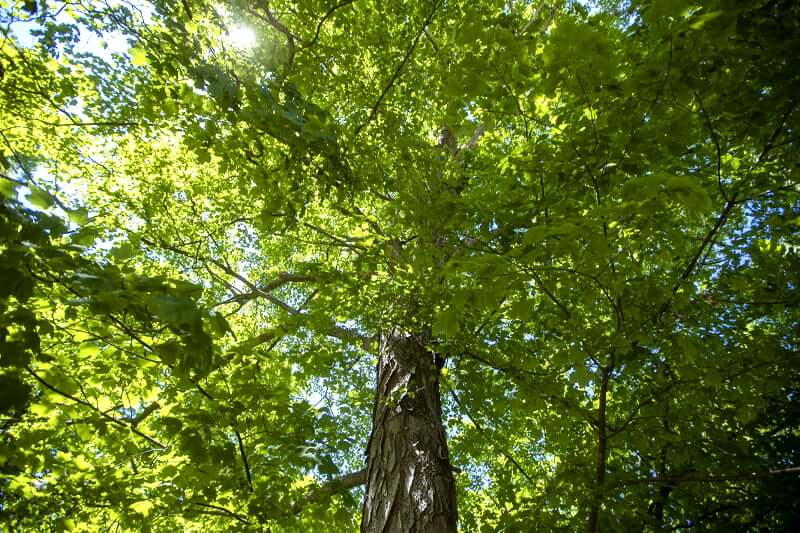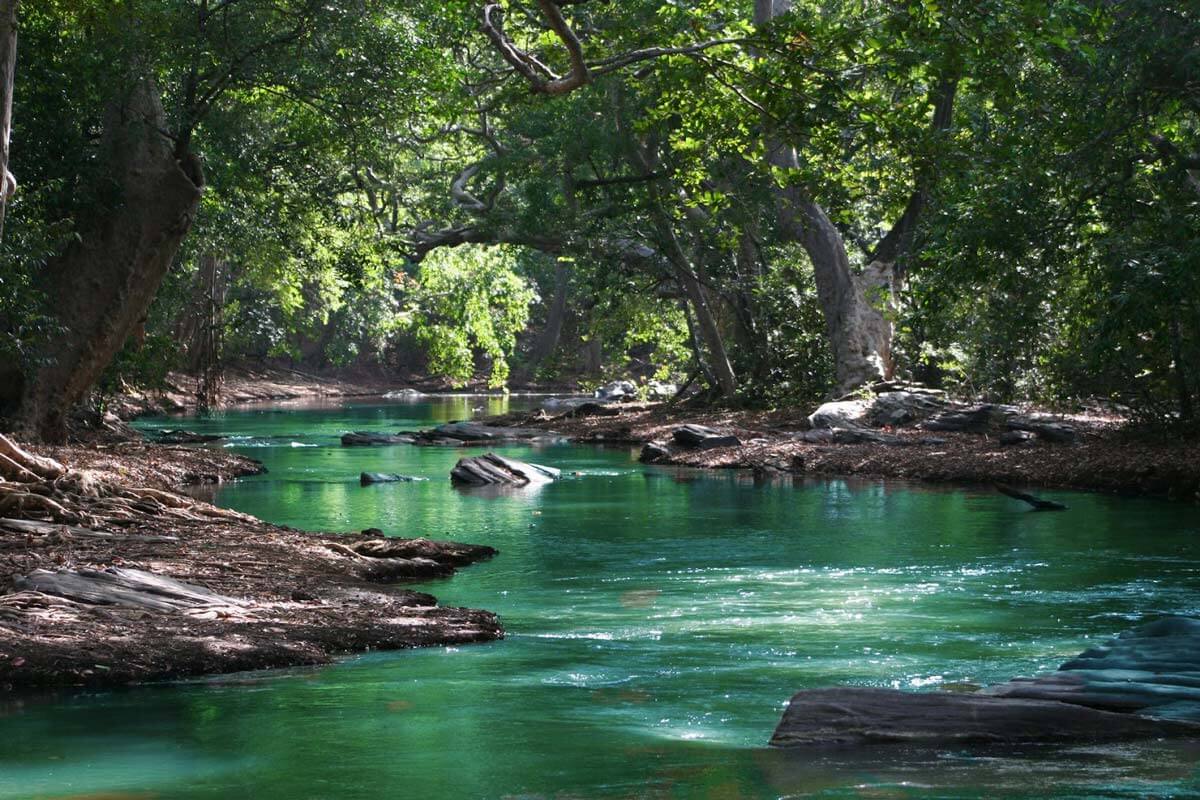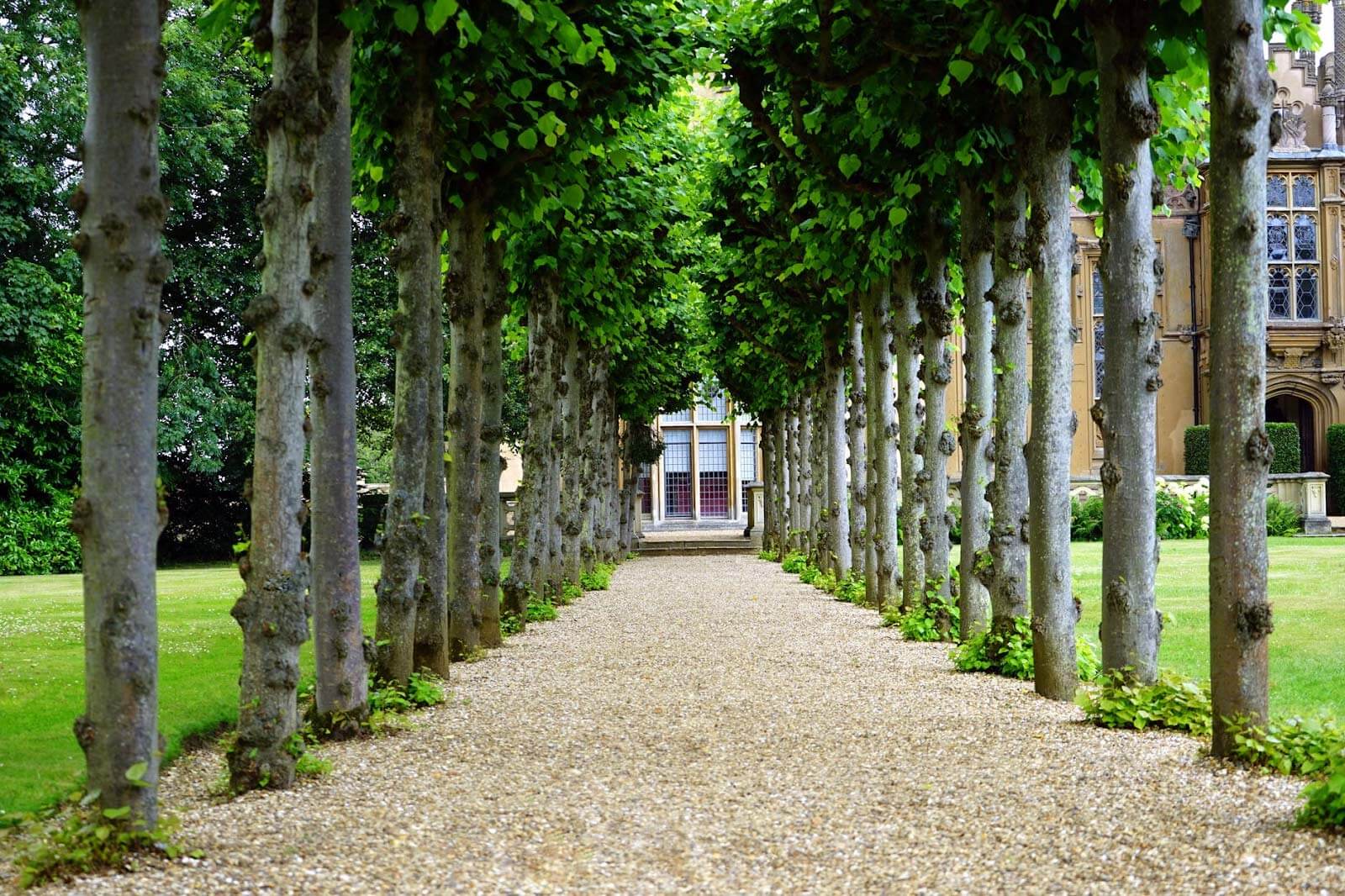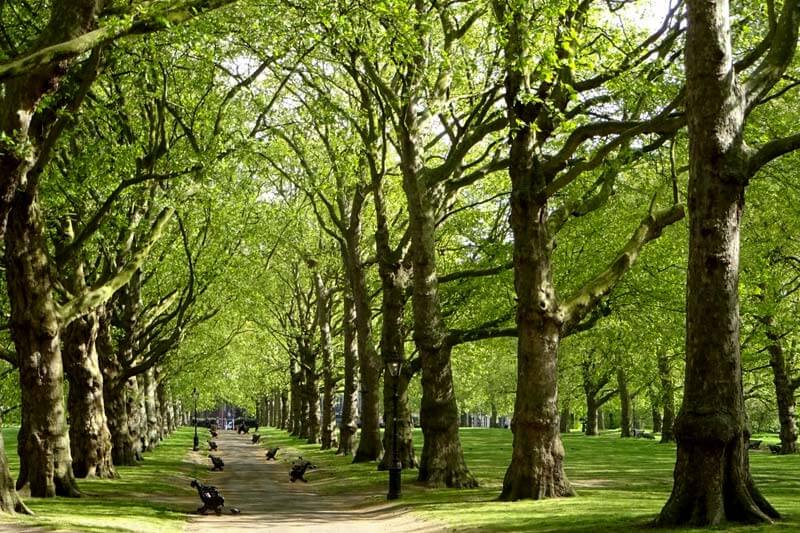Trees play a crucial role in our ecosystem. They offer advantages1 both to humans and the natural world.
Trees provide the oxygen we breathe while removing CO2 from the air. They keep the environment clean and cool, increase property values, and add beauty to the landscapes in which they are planted.
Here are several facts on trees and oxygen.

What we cover
ToggleTrees Provide The Oxygen We Breathe
It is well known that trees produce the oxygen we breathe. They also remove the CO2 we breathe out and produce from other activities. This cleans the air and cools the environment.
A single average-sized tree provides enough oxygen for a family for a year. An acre of forest removes 6 tonnes of CO2 from the air while providing 4 tonnes of oxygen.
Trees Can Help Reduce Your Energy Costs
When you plant trees around your home in a strategic way they can reduce the energy costs in winter by shading or creating a wind-break. Air conditioners are a huge power sap, so reducing cooling costs represents a huge saving.
Less energy consumption ensures that the environment is clean and that the oxygen we breathe is clean.
Trees Enhance Water Quality
When it rains, trees purify the rainwater as it falls. Trees block the falling rain, remove impurities and let it soak into the soil, and drain into rivers. When this water evaporates back into the air on sunny days, it provides clean oxygen to breathe.

Trees Help To Combat Climate Change
There are increasing levels of global warming due to the increase in CO2 in the environment. Human activities have increased levels of CO2 in the environment.
One major function of trees is to remove CO2 from the air. Planting more trees will help a great deal to solve climate change and the problems it causes. When driven for a year, a tree can remove as much CO2 as a car produces.
A mature tree removes more pollution from the environment than a young tree. Over the lifetime of a single tree, it can absorb up to a million pounds of CO2. Although trees do release Co2 back into the atmosphere at night, it’s significantly less than they absorb during the day.
We should always plant trees to have more mature trees at any time.
Trees Help To Reduce Stress
If you are feeling stressed, spending some time under trees helps to eliminate the stress. Trees make people feel good. Wherever there are trees, there is cleaner air. Spending time in this clean air helps to relieve stress and provides an opportunity to think clearly.
Trees help to lower heart rates which helps us to relax and reduce stress. If you are sick in a hospital surrounded by trees, you will heal faster and consume less medication.

Trees Help To Reduce Soil Erosion
Trees planted on hills help minimize the rate at which soil runs off the hill. Trees have deep roots that keep the soil in place. Soil erosion removes the fertile topsoil of the land. Trees keep the hill fertile for the trees and other plants to keep growing.
Trees Lower Temperatures Outdoors
Trees provide shade and lower temperatures. Cities with high buildings of brick absorb lots of heat from the sun. This makes the cities too hot.
Planting trees in different parts of the city, and leaving numerous green areas in the city helps to reduce the temperatures of the city and makes it easy to live and work here.

Oxygen Supports Life On Earth
To keep living, humans and many other organisms on Earth have to breathe in oxygen. Trees breathe in CO2 breathed out by humans and produce oxygen to the environment for human beings and other creatures on the earth to breathe.
Too Much Oxygen Can Kill You
While oxygen is necessary for life on Earth, it can kill you if it is in excess. Oxygen is an oxidation product. When there is too much oxygen in your system, it may overwhelm it and could cause death.
Oxygen Is Abundant
Oxygen is about 21% of the environment. It is the third most abundant element in the environment. The human body is two-thirds oxygen. 50% of the earth’s crust is oxygen while the remainder is made up of other elements. Rocks are 46% oxygen. Freshwater and seawater also consist of oxygen.
Oxygen Is Tasteless And Invisible
You cannot see, taste, or touch oxygen. It is necessary for burning although it doesn’t burn.

FAQ's
On average a fully mature tree produces about 300 grams of oxygen. Over a year, a fully mature tree can produce up to 260 pounds of oxygen. Two fully mature trees can provide oxygen for a family of four for a year.
Trees are some of the oldest living organisms on earth. Trees do not die of old age. Trees die because they are cut down by people. Trees can live for 100 to thousands of years. One of the oldest existing trees is about 5,000 years old.
Pure oxygen doesn’t burn. However, for a fire or for combustion to continue, the presence of oxygen is necessary. Without oxygen, a fire will go off.
Trees increase the value of a property. If you want to sell a property, mature trees in the property will increase the asking price of the property. If trees are planted in an office or factory, workers are more productive.
Further, the shade and cool air brought about by trees around the property help to lower the cost of energy in your home.
Trees are essential for life. Trees ensure that we have sufficient oxygen in the world. Trees remove excess CO2 from the environment and produce oxygen to breathe. By removing CO2 they help to keep the air clean and the environment less polluted. Trees clean water, provide shade and reduce soil erosion.

- Tree People, (2023) 22 Benefits of Trees. <https://www.treepeople.org/22-benefits-of-trees/> Accessed: 16-03-2024



